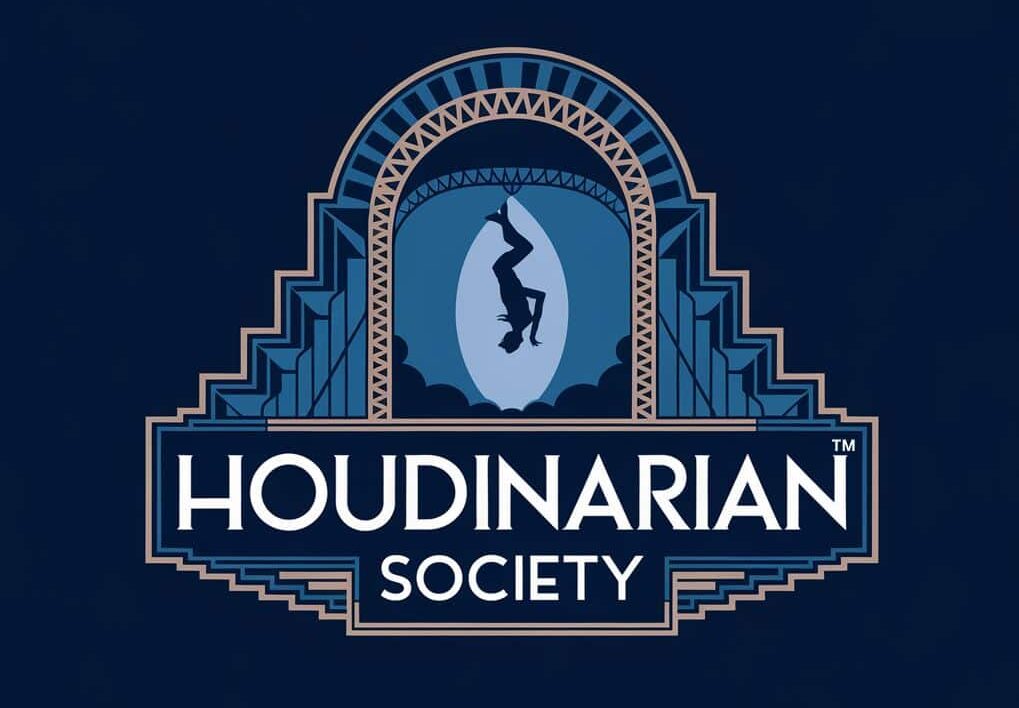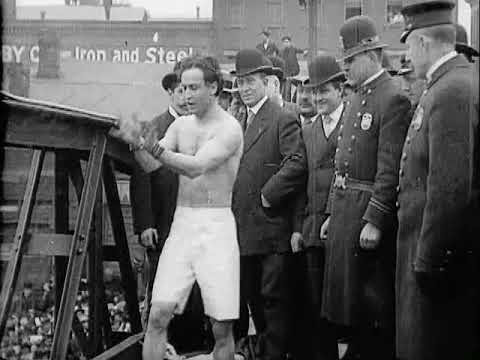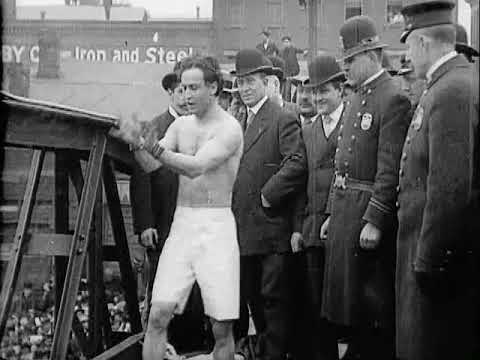Unveiling Harry Houdini’s Life and Death Myths Explained
In the annals of entertainment history, few names evoke the mystique and awe that Harry Houdini does.
Known for his incredible escape acts and death-defying stunts, Houdini’s life story is a fascinating blend of hardship, showmanship, and relentless ambition.
This blog post delves into the life and legacy of Harry Houdini, exploring how he transformed himself from a poverty-stricken immigrant to a global icon of magic and illusion. For those curious about the intricate details of his life, this National Geographic article offers a comprehensive look.
The Early Years: From Ehrich Weiss to Harry Houdini
Born Ehrich Weiss in 1874, Houdini’s early life was marked by poverty and struggle.
His family, Jewish-Hungarian immigrants, moved to Wisconsin in search of a better life. Ehrich’s father, a rabbi, found it difficult to make ends meet, which instilled in young Ehrich a burning desire to escape his circumstances.
First Steps into Magic
From a young age, Ehrich showed an affinity for dexterity and illusion.
By the age of six, he was already practicing sleight of hand, and by seven, he was a regular at local circuses.
His first significant foray into performance came in 1883, when he set up an improvised circus with neighborhood boys and performed as a trapeze artist, dubbing himself the “Prince of the Air.”
The Birth of Harry Houdini
In the 1890s, inspired by the memoirs of French magician Jean-Eugène Robert-Houdin, Ehrich adopted the stage name Harry Houdini.
He added an “i” to Houdin’s name and chose “Harry” in homage to American magician Harry Kellar. This marked the beginning of his journey as a professional magician.
Metamorphosis: The Signature Act
Houdini’s breakthrough came with the act known as Metamorphosis, first performed at the 1893 Chicago World’s Fair.
Initially, his brother Theodore “Dash” Hardeen assisted him, but he was later replaced by Houdini’s wife, Bess.
The act involved Houdini being tied up, placed in a sack, and locked in a chest, only to switch places with his assistant in a matter of seconds, leaving audiences astounded.
The Rise to Fame
Despite the popularity of their performances, financial success eluded the Houdinis until 1899.
That year, entrepreneur Martin Beck offered Houdini a contract to perform in his theaters. This opportunity catapulted Houdini to international fame, with performances in Britain and Russia solidifying his reputation as an unparalleled escape artist.
Innovations and Challenges
Houdini continually pushed the boundaries of his craft.
He was known for his daring escapes from water-filled milk cans, being thrown off bridges while chained, and even escaping from a freezing prison van in Russia.
These feats not only captivated audiences but also attracted a slew of imitators and doubters, compelling Houdini to constantly innovate and defend his name.
The Ultimate Escape: Houdini’s Cinematic Endeavors
Houdini’s fame extended beyond live performances.
He starred in early cinema, with notable roles in films like “The Grim Game” (1919). His on-screen persona mirrored his real-life daredevilry, further cementing his status as a cultural icon.
The Psychology Behind the Stunts
Houdini often spoke about the importance of conquering fear in his acts.
He subjected himself to rigorous self-training to avoid panic, a testament to his mental fortitude.
Some biographers suggest that his extreme acts were a way to cope with the trauma of his impoverished childhood and the anti-Semitic insults he faced.
The Skeptic and the Spiritualist
Despite his seemingly supernatural abilities, Houdini was a staunch critic of spiritualism, a popular practice during his time.
He regarded it as fraudulent and dedicated part of his career to debunking spiritualists, aligning himself with the emerging idea of rationalism.
A Mysterious End
Houdini’s death in 1926 remains shrouded in mystery.
While performing in Montréal, a student punched him in the stomach, leading to severe pain. Days later, Houdini died from peritonitis caused by appendicitis.
Debate continues over whether the punch was the direct cause of his death or if it was an unrelated medical condition.
The Legacy of Harry Houdini
Nearly a century after his death, Houdini’s legacy endures.
Myths and stories, some as fantastical as his acts, continue to circulate. One such tale, popularized by Orson Welles, claims Houdini made the bells of the Kremlin ring by merely lifting his hand, a story that underscores the enduring aura of the supernatural that surrounds him.
Houdini’s Enduring Influence
Houdini left an indelible mark on the world of magic and entertainment. His life story is a blend of hardship, ambition, and unparalleled skill. This continues to inspire magicians and entertainers worldwide.
For a deeper dive into the life and myths surrounding Harry Houdini, visit this National Geographic article.






